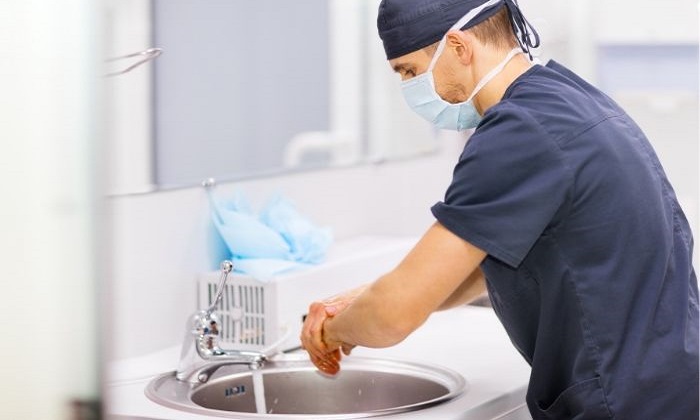As more hospitals hold their leadership responsible for hand hygiene, hand-washing adherence is increasing, according to patient safety watchdog The Leapfrog Group.
According to statistics from 2,149 surveyed hospitals published on Wednesday, the proportion of hospitals achieving Leapfrog’s hand hygiene criterion has increased from 11% to 74% in 2023 since it started collecting and reporting data on hospital hand cleanliness in 2020.
Hospitals must use best practices that have been approved by their expert panel and modified from World Health Organization framework guidelines in order to comply with the requirement. These specifications include the following five major domains: infrastructure (such as access to handwashing supplies), culture, training and education, monitoring, and feedback.
Even while Leapfrog’s analysis shows a seven-fold improvement in hand-washing compliance, the organization pointed out that 559 of the hospitals it studied failed to satisfy its standards, putting hundreds of thousands of patients at unnecessary risk. It also recognized that even among those who met its threshold, there were “gaps in compliance.”
Other particular areas where the hospitals examined may improve are included in the study. In the area of culture, for example, 99.3% of hospitals said that in the previous year, their CEO, CMO, and CNO had shown front-line staff members how important it is to wash their hands.
From 2020 to 2023, the percentage of hospitals that gave executives access to data on hand hygiene compliance and subsequently held them responsible for their actions via performance evaluations or pay increases increased from 48.6% to 86.3%.
In order to guarantee adherence, 92.4% of hospitals in 2023 reported using compliance officers or hand hygiene coaches, up from 58.7% in 2020.
During that time, the use of electronic compliance monitoring technology more than quadrupled, although it is still only 10% of the total. Leapfrog said in a press release that despite this rise, there is a wider trend toward incorporating sophisticated technologies to overcome the shortcomings of the human observer.
Leapfrog’s research lamented that over 14% of respondents, or 307 hospitals, still do not require employees to physically show correct hand washing technique in order to complete first training, despite the fact that this practice is far less widespread. Ninety-five percent of hospitals undertake audits to make sure the right quantity of hand sanitizer is being distributed, and 96.3% of hospitals indicated they had procedures in place to guarantee supplies are accessible to staff.
According to Leah Binder, president and CEO of The Leapfrog Group, “Leapfrog will continue to publicly report each hospital’s performance and uphold the highest possible standards for excellence.” They contend that openness and integrity are what really spark change, and we are honored to honor the hospital’s executives, physicians, and teams that carry out this transformation with such success.
Hand washing is a crucial part of infection control plans in hospitals and may reduce avoidable patient harm in addition to directly saving money.
Improvements in hospital infections and patient satisfaction metrics have been reported by Leapfrog since the company released its expanded Hospital Safety Grades in the spring. Although the agency’s data set from the BD Insights Research Database and the PINC-AI Healthcare Database only extended through 2022, a July update from the Centers for Disease Control and Prevention revealed an increase in hospital infections that are resistant to antibiotics since 2019.


















